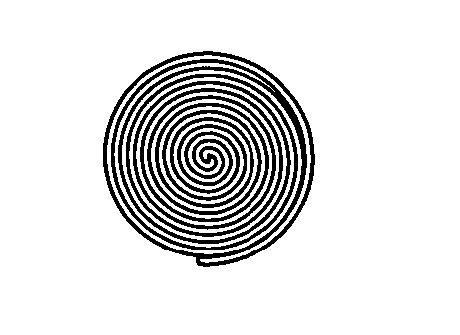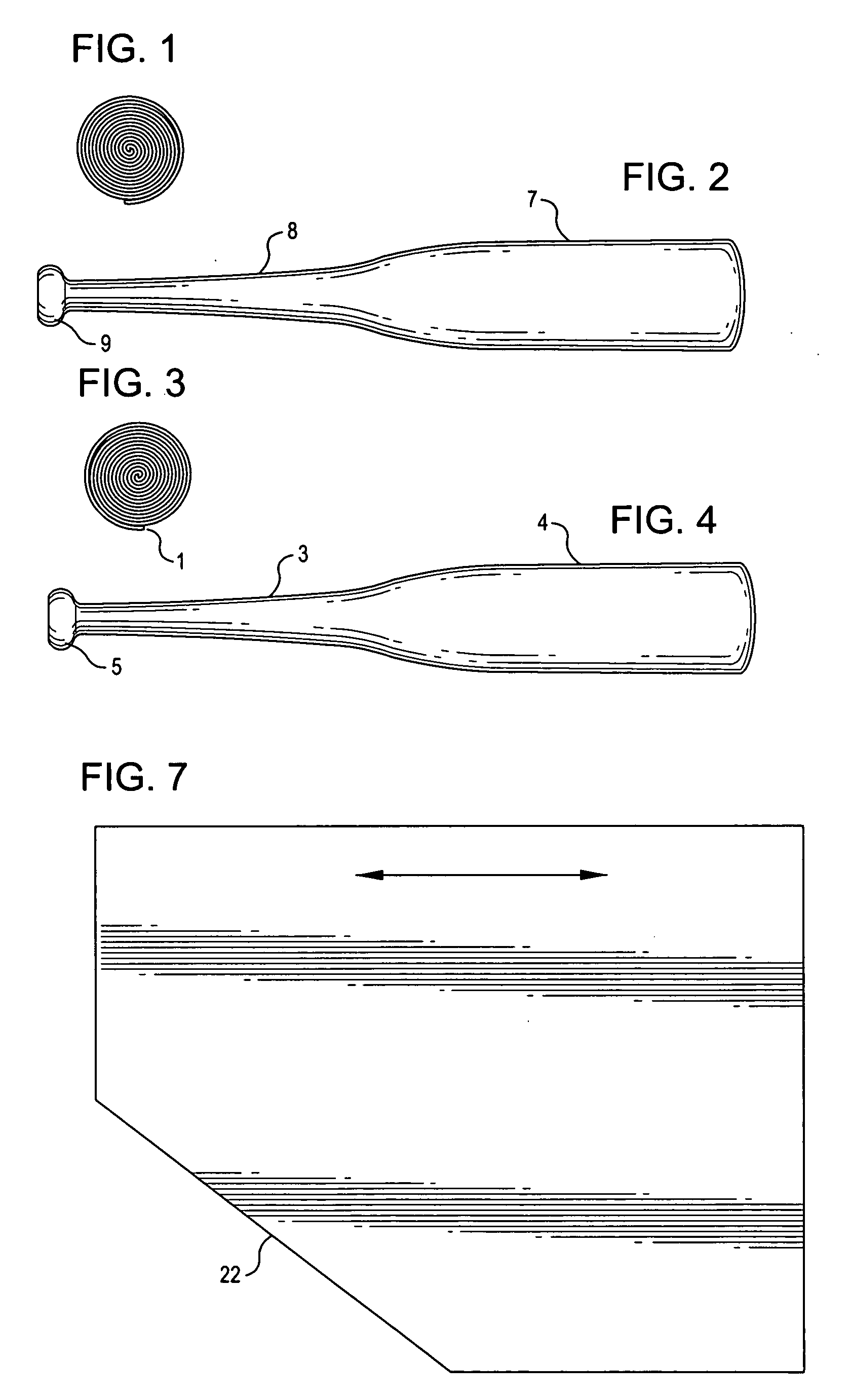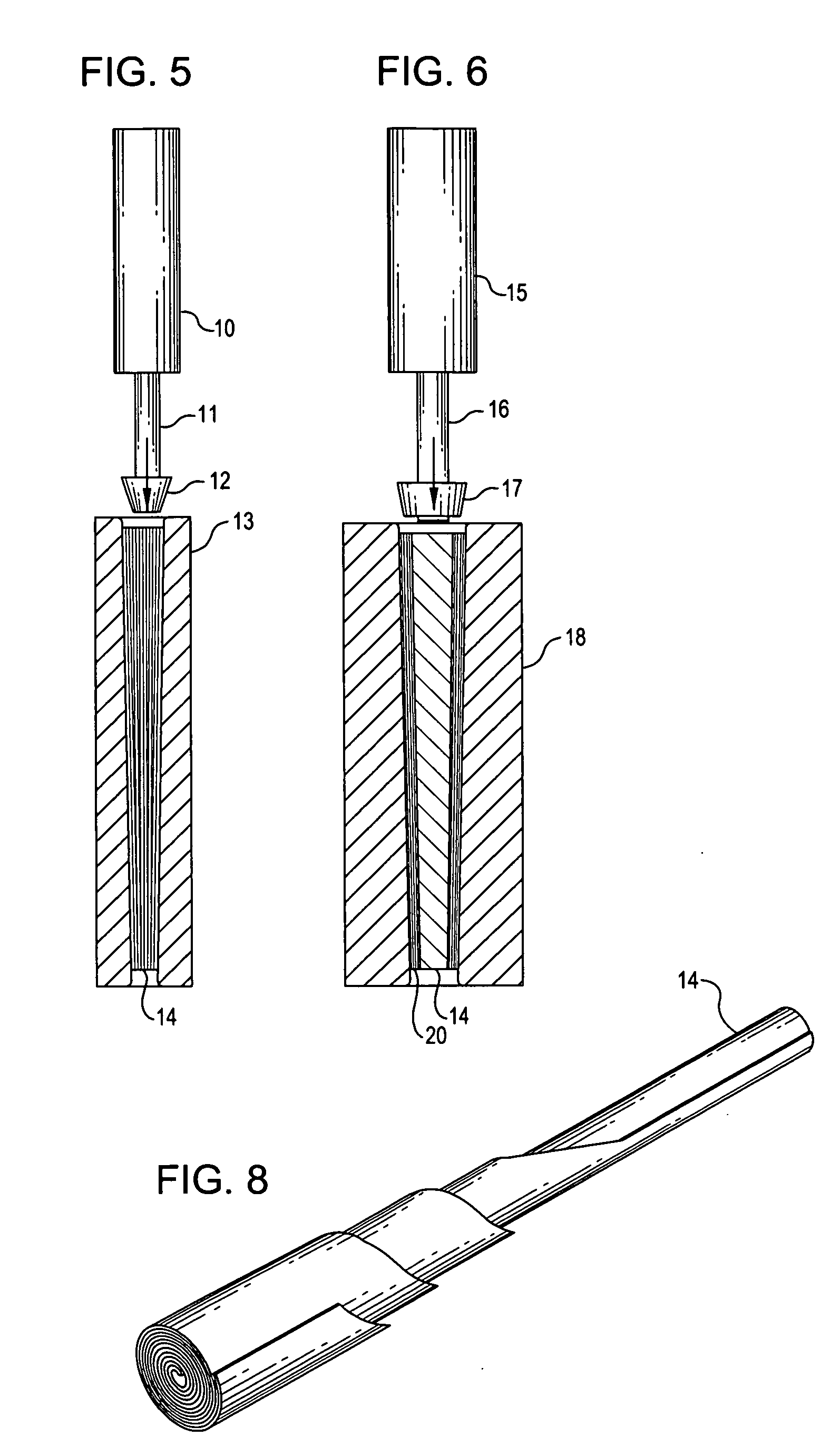Spiral wound laminate wood and method for construction
a technology of spiral wound and laminate wood, applied in the field of wood products, to achieve the effect of strong laminate bonding, low axial force, and minimal thickness of glu
- Summary
- Abstract
- Description
- Claims
- Application Information
AI Technical Summary
Benefits of technology
Problems solved by technology
Method used
Image
Examples
Embodiment Construction
[0034] In the following description, various embodiments of the present invention will be described. For purposes of explanation, specific configurations and details are set forth in order to provide a thorough understanding of the embodiments. However, it will also be apparent to one skilled in the art that the present invention may be practiced without the specific details. Furthermore, well-known features may be omitted or simplified in order not to obscure the embodiment being described.
[0035] The spiral wound bat or other implement will be constructed of either a single or multiple veneer sheet(s) 22 of varying thicknesses wound in a very tight spiral pattern 14 as illustrated in FIGS. 7 and 8. For ease of description, one sheet will be referenced throughout this disclosure. The veneer sheet can be cut at an angle 22 to create a slightly tapered profile 21 when rolled. The veneer sheet is then coated with a common glue, binder, epoxy or thermal set resin, rolled 14, and placed...
PUM
| Property | Measurement | Unit |
|---|---|---|
| length | aaaaa | aaaaa |
| thickness | aaaaa | aaaaa |
| pressure | aaaaa | aaaaa |
Abstract
Description
Claims
Application Information
 Login to View More
Login to View More - R&D
- Intellectual Property
- Life Sciences
- Materials
- Tech Scout
- Unparalleled Data Quality
- Higher Quality Content
- 60% Fewer Hallucinations
Browse by: Latest US Patents, China's latest patents, Technical Efficacy Thesaurus, Application Domain, Technology Topic, Popular Technical Reports.
© 2025 PatSnap. All rights reserved.Legal|Privacy policy|Modern Slavery Act Transparency Statement|Sitemap|About US| Contact US: help@patsnap.com



